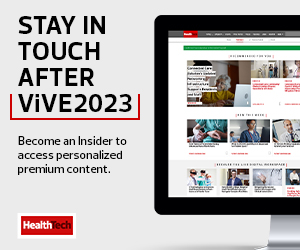AI Drives Operational, Clinical and Research Efficiency in Healthcare
While ChatGPT has healthcare IT leaders excited, they are also cautious. Michelle Greene, executive vice president and CIO of Cardinal Health, said the tool needs governance around it. However, AI is not new in healthcare and has been used in other ways for years.
Tricia Coffey, chief health information officer for the National Institutes of Health Clinical Center, said the center has seen great benefits from using AI. It has automated processes around data capture and input so researchers can spend more time on data analysis and clinicians can spend more time with patients.
“The beauty of AI is that it keeps getting better as you train it,” said Ashok Chennuru, chief data and analytics officer at Elevance Health, which used AI to clean up its provider directory data based on location and conditions to provide better access to care. “If you do it right, it changes how consumers get care.”
He emphasized the need to operationalize and learn from data models rather than continuing to build new ones.
Greene said Cardinal Health uses AI for its supply chain to ensure carriers have the right information to get supplies to patients more quickly and accurately.
Today, AI is often used in healthcare to automate repeatable tasks related to documentation or data collection. Natural language processing tools can use AI to transcribe conversations between clinicians and patients, then pull out key information to add to the electronic health record. This saves physicians time and can make documentation more accurate and complete.
MORE FROM ViVE: How to create digital transformation and innovation in healthcare.
How to Balance AI Implementation with Staff Concerns
Despite the benefits of AI, some clinicians and healthcare staff may be worried that AI will eliminate jobs. Coffey said IT leaders need to reframe the conversation.
“AI can lead to more efficiency, but it won’t necessarily save a lot of cost or replace people,” she said. “Rather, it frees up time and adds to the work quality and work-life balance.”
AI can also be seen as an upscaling opportunity and as part of the continuous evolution of healthcare. Chennuru said the industry should look at AI as an efficiency play amid staff shortages. He emphasized the importance of learning and asking more questions, which can be supported by AI.
Greene recommended starting the implementation process with a conversation.
“Engage your team about tasks they’re doing that they wish were off their plates. It frames the conversation differently,” she said. “They’re part of the decision about different ways to handle repeated tasks.”
Most importantly, Greene said health IT leaders need to communicate the “why” behind AI.
“Anytime we do something with AI, we have to think about the why. The why helps translate for your teams,” she said.
“As leaders, we have to frame it in the right way for our staff to help them understand that they’re still an important piece of the puzzle,” Coffey added.














